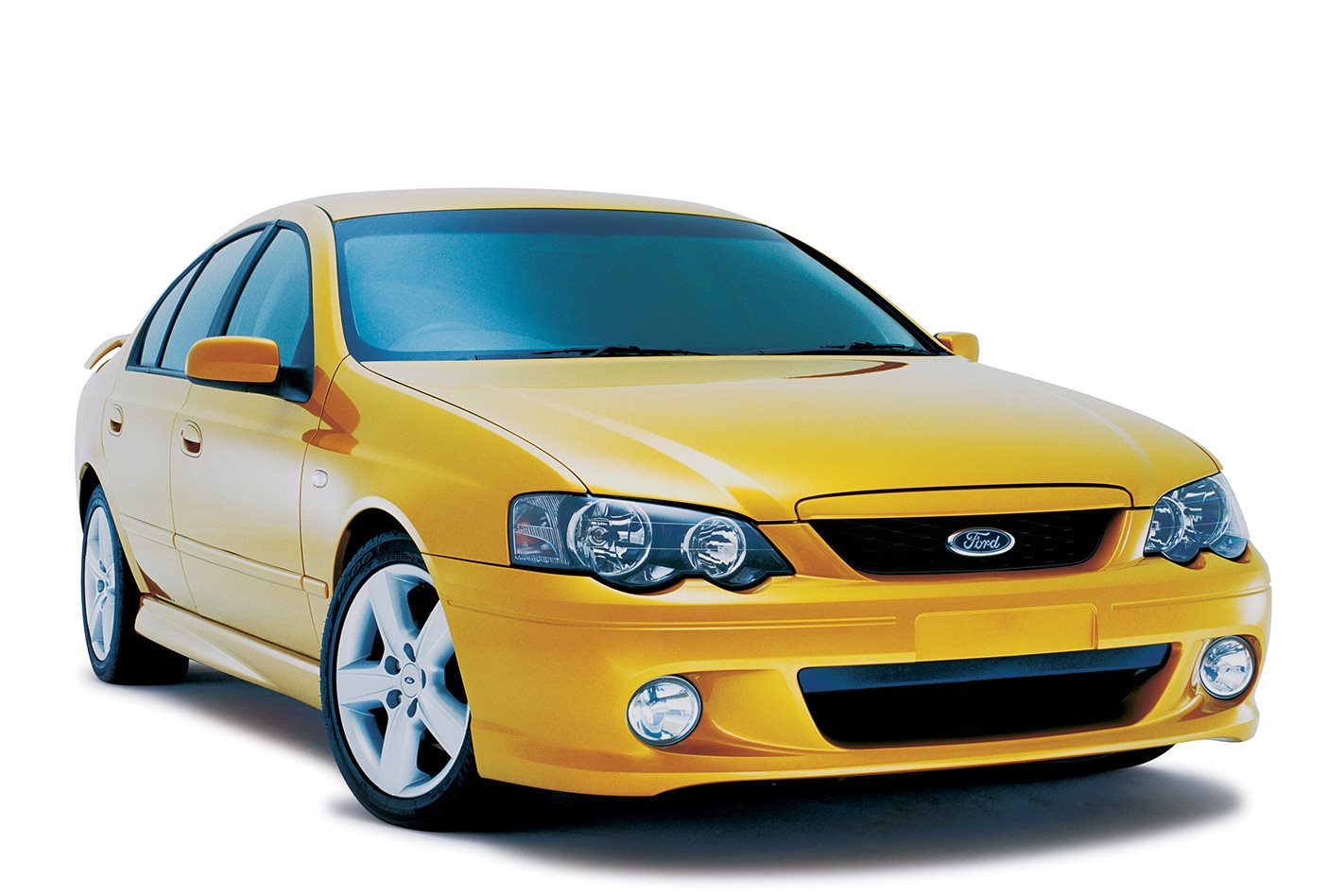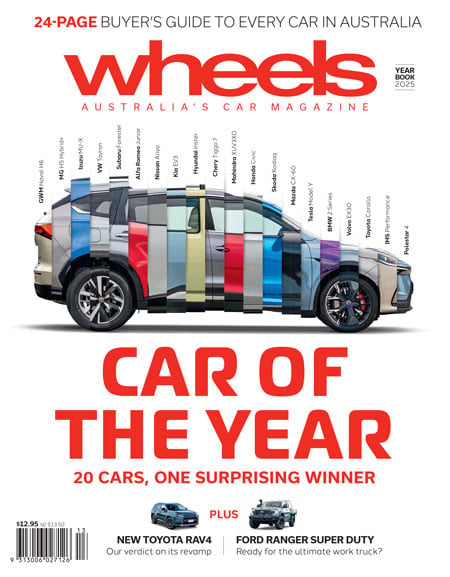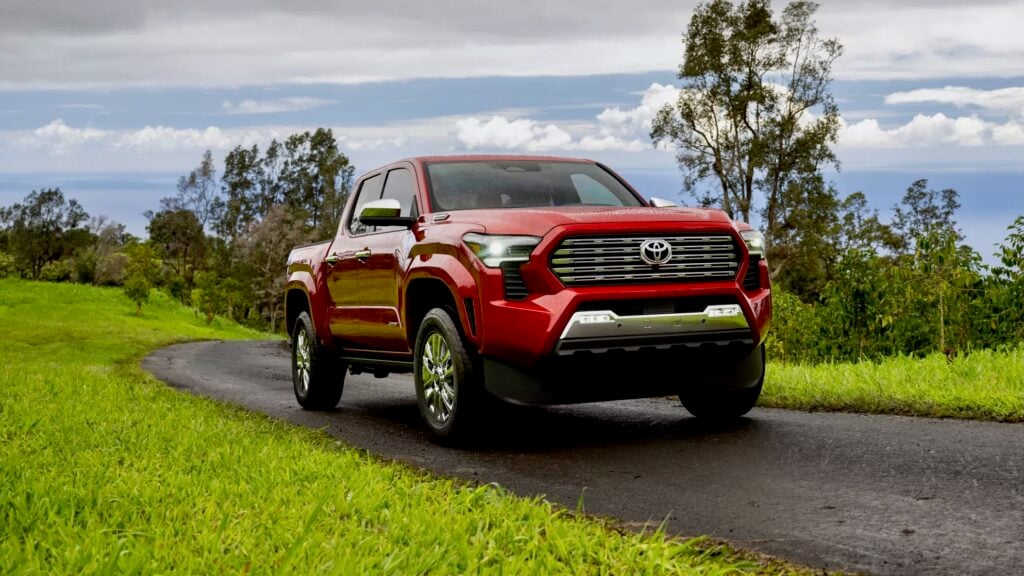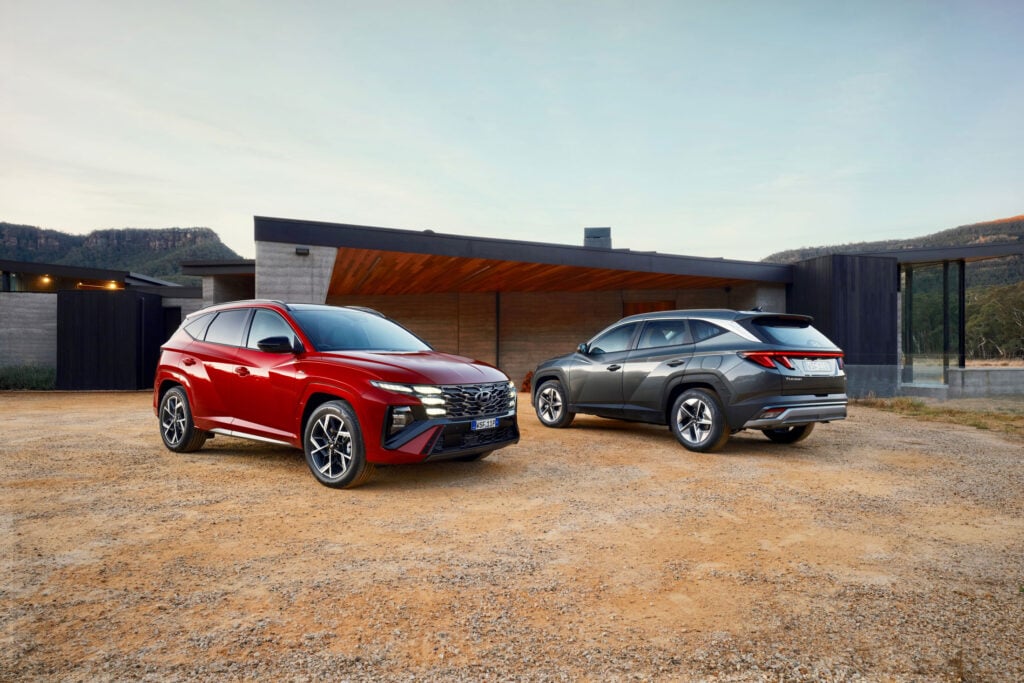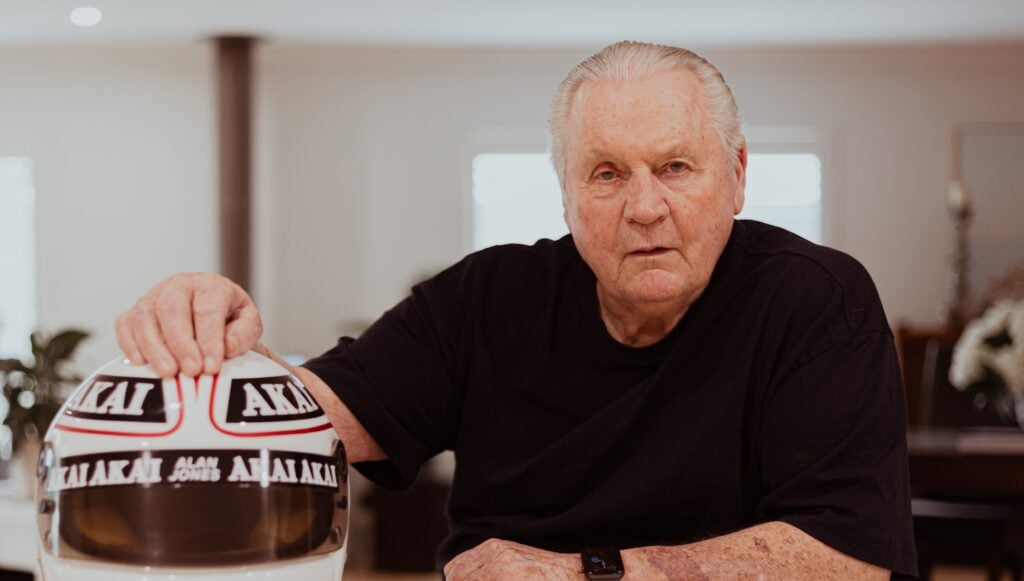Only the four doors remain – every other panel as well as the front and rear windscreens are new; however, changes to Ford’s new Falcon reach much deeper than its aesthetics.
This article was originally published in MOTOR magazine September, 2002.
It started as a simple mid-model grille-and-headlight facelift in the spring of 1998. The timing was right for Falcon. A year earlier and perhaps the new Falcon would have remained just a grille-and-light job.
In 1998, the design culture at Ford was to change dramatically, and Falcon would benefit from top-level staff changes at Ford Corporate HQ.
Steve Park, head of design at Ford during AU, was posted to the US soon after AU Falcon was launched in September 1998. His replacement was American Scott Strong, who worked closely with Ford’s new global vice president of design J Mays, who had come from Audi to replace the legendary Jack Telnack.
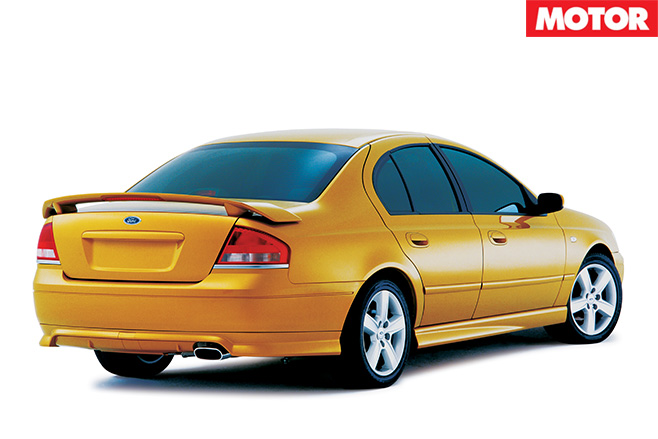
The new BA Falcon – codenamed Barra – will have cost Ford Australia half a billion dollars to design and develop. The changes are immense and include a new interior, new inline six-cylinder and V8 engines, and new independent rear suspension.
Is it a make or break car for Ford Australia? Polites says no, Mays says definitely yes. A make vehicle, perhaps, in terms of design credibility. Without BA, there’s doubts Ford would be doing the R7 wagon.
In the summer of 1998 – a month after the AU Falcon’s launch – Mays, Strong, Falcon’s exterior design manager Graham Wadsworth and a team of clay modellers worked to get Barra’s basic proportions right. It was clear that Barra would follow a European design bias (not necessarily Ford Europe) rather than an American bias.

Where the AU was heavily influenced by Ford ‘New Edge’ styling, the BA Falcon marks a return to proportions, presence and width. “We were having a long hard talk about the integrity of design rather than fashion statements,” declares Mays.
“We raised the deck, we pulled the wheels back, we raised the hood, we brought the quarter panel out, we brought the fenders out, and we flattened the roof. That’s roughly it, a no-nonsense approach,” said Wadsworth. “All the basic architecture was done within a few weeks in late ’98, early ’99. For the next two years, we finessed and refined it.”
Said Mays: “I had been down for the launch of the AU; that was my first press launch with Ford. Seeing that car compared to what was going on in the rest of the world was worthwhile. The thing that was on my mind, and this may be me coming out of a German company, was looking at Ford Europe and US and Australia and the products they had.”
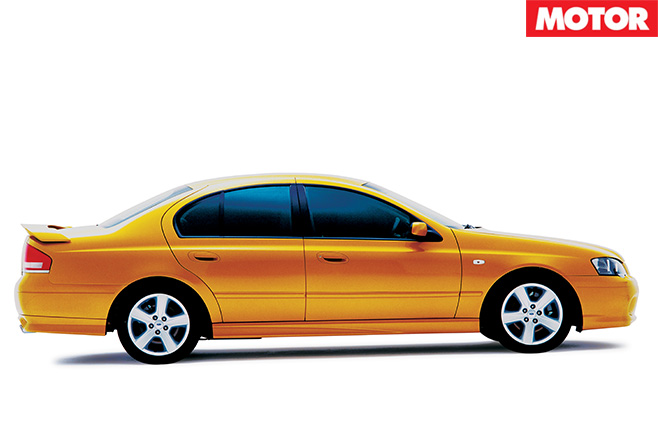
“I think it is going to be a make vehicle,” says Mays confidently, and the key to BA Falcon’s success is the base-model Forte.
That is precisely Strong’s approach to Barra, and he never held back in letting everyone know it; his rantings are legendary at the Broadmeadows design studio. “We wanted the base Falcon to look like a car you really want to own, rather that what you buy because you can’t afford a more expensive car,” explains Strong from his office in the US. In 2001, he was promoted from Chief of Design Ford Australia to Director of Ford Passenger Cars, North America.
He fought every design battle, including the long S-shaped cutline where the rear bumper joins the quarter panel. When suppliers claimed they couldn’t produce a good panel fit, Strong showed them German cars that did. “We have to manufacture as well as anybody in the game,” insists Strong.
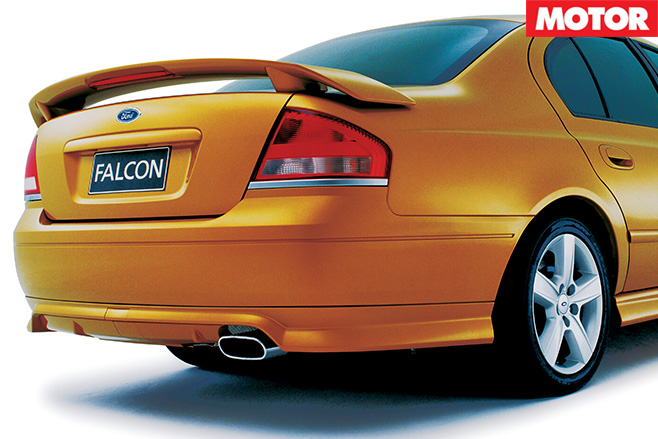
Butterworth’s input will be seen in the details. He insisted on lowering the ride height across the range, and dropped the ride height of XR6 and XR8 even further. He uses terms like ‘animalesque’ and ‘predatory’ to describe the BA Falcon, but it is the XR, with its new headlight treatment and wide-open air intake, that speaks dynamic aggression.
Strong arrived at Broadmeadows and met the motoring press with an awkward question: How important are the quad headlights to XR?
Strong felt the fussy panel fit of the moulded front bumper around the four independent headlamps was a mess of inconsistent panel gaps. “Scott was passionate about the Barra XR not being dealt with that way. In the year 2002, you can’t go and take two headlamps off the shelf and put a front clip on it and think you’re going to call it an XR,” says Wadsworth.
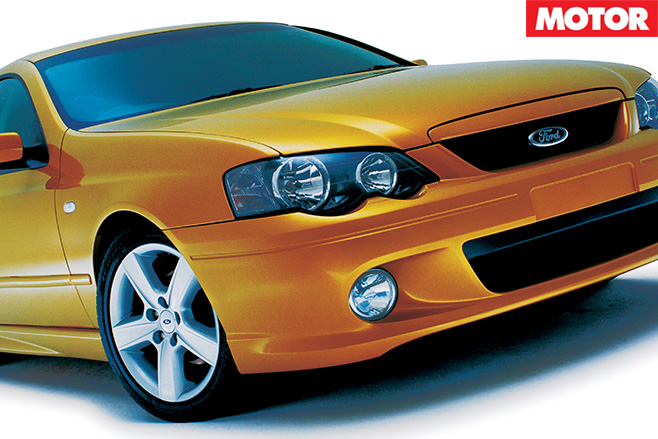
“There were people within Ford and Tickford who wanted to perpetuate the twin rounds, and it just wasn’t going to work. It was not the right look for 2002,” explains Wadsworth.
The headlamps were the focus of change, and in the end the BA XR range is now more integrated from its large air-swallowing intake to the deck lid spoiler and oval exhaust. The XR6 and XR8 will carry the same front and rear bumper mouldings with a single exhaust.
There will be no twin exhaust for the 5.4-litre XR8. Butterworth claims the V8 required some unique design changes. “The cooling requirements for this car are pretty phenomenal. We had to work closely with the cooling guys and aero guys to achieve sufficient cooling for the V8. About 60 per cent of cooling air comes through the lower grille opening.”
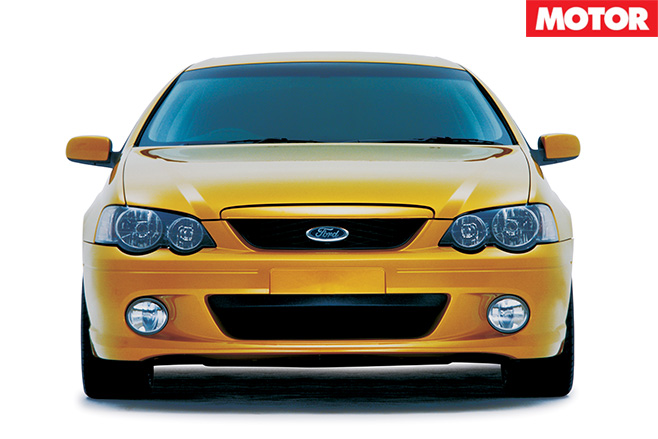
“One of the most satisfying moments in the design of the XR is when the first one came down the production line and the workers kept coming over and looking at it,” remarked Butterworth. “We left it at the end of the line where everyone could have a look and they stood 10 to 15 deep. The reaction to the car was so positive.”
SPECS Body: four-door sedan Drive: rear-wheel Engine: front-mounted 5.4-litre DOHC 32-valve V8 Power: 260kW @ 5750rpm Torque: 500Nm @ 4250rpm Compression: 10:1 (est) Weight: 1585 kg (est) Weight/power: 6.1 kg/kW Specific power: 48.1 kW/litre Transmission: five-speed manual Suspension: double wishbones, coil springs, gas dampers, anti-roll bar (f); double wishbones, coil springs, gas dampers, anti-roll bar (r) L/W/H: 4970/1870/1430 (est) mm Wheelbase: 2810 mm (est) Track: 1566 mm (f); 1567 mm (r) Brakes: 329 mm ventilated discs, two-piston calipers (f); 287 mm solid discs, single-piston calipers(r), ABS Wheels: 17 x 8-inch (f & r), alloy Tyres: 235/45 ZR17 (f & r) Fuel: 68 litres (PULP) List price: $50,000 (est)

